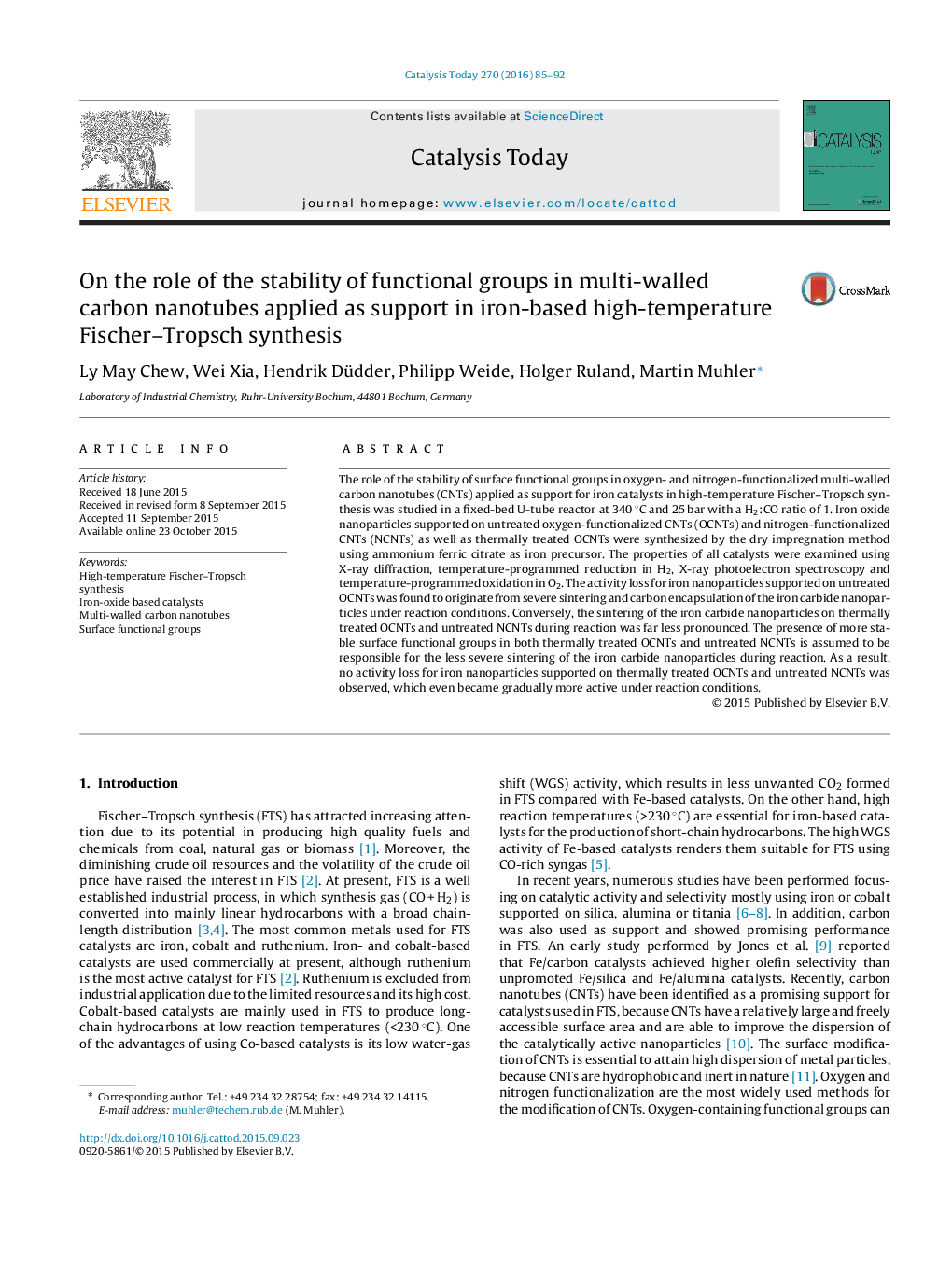| کد مقاله | کد نشریه | سال انتشار | مقاله انگلیسی | نسخه تمام متن |
|---|---|---|---|---|
| 53260 | 46957 | 2016 | 8 صفحه PDF | دانلود رایگان |
• Oxygen-functionalized carbon nanotubes were applied in Fischer–Tropsch synthesis.
• The initial activity loss of Fe/OCNTs at 340 °C is due to sintering.
• Further deactivation is due to carbon encapsulation.
• Thermally stable functional groups were obtained by reducing OCNTs in ammonia.
• Removing labile oxygen groups also led to improved activity and stability.
The role of the stability of surface functional groups in oxygen- and nitrogen-functionalized multi-walled carbon nanotubes (CNTs) applied as support for iron catalysts in high-temperature Fischer–Tropsch synthesis was studied in a fixed-bed U-tube reactor at 340 °C and 25 bar with a H2:CO ratio of 1. Iron oxide nanoparticles supported on untreated oxygen-functionalized CNTs (OCNTs) and nitrogen-functionalized CNTs (NCNTs) as well as thermally treated OCNTs were synthesized by the dry impregnation method using ammonium ferric citrate as iron precursor. The properties of all catalysts were examined using X-ray diffraction, temperature-programmed reduction in H2, X-ray photoelectron spectroscopy and temperature-programmed oxidation in O2. The activity loss for iron nanoparticles supported on untreated OCNTs was found to originate from severe sintering and carbon encapsulation of the iron carbide nanoparticles under reaction conditions. Conversely, the sintering of the iron carbide nanoparticles on thermally treated OCNTs and untreated NCNTs during reaction was far less pronounced. The presence of more stable surface functional groups in both thermally treated OCNTs and untreated NCNTs is assumed to be responsible for the less severe sintering of the iron carbide nanoparticles during reaction. As a result, no activity loss for iron nanoparticles supported on thermally treated OCNTs and untreated NCNTs was observed, which even became gradually more active under reaction conditions.
Figure optionsDownload high-quality image (213 K)Download as PowerPoint slide
Journal: Catalysis Today - Volume 270, 15 July 2016, Pages 85–92
